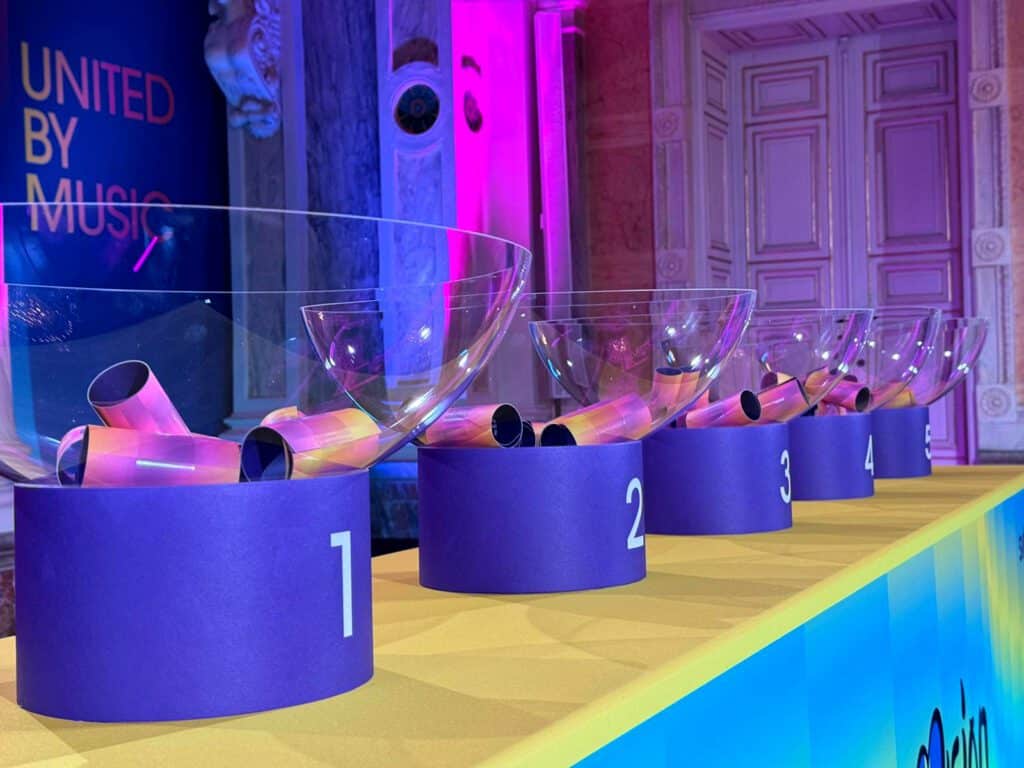A new draw system for the running order in the Eurovision 2024 Final!
After the introduction of new voting rules and the announcement that Big 5 will take place in the semi-finals, the competition organisers have announced a new rule: the introduction of a new draw system for the running order in the Final!
Gone is the simple choice between the first and second half of the evening: this year, the artists will have more control over their stage destiny. Or at least the production will.

The running order - a challenge for all candidates
The running order is a hot topic in the small world of Eurovision. Statistics show that candidates who perform late in the evening win more often than candidates who perform in the first half. It's also important to avoid placing similar songs too close together, so as not to find yourself in direct competition with similar styles.
Normally, the qualifying countries and the "Big 5" drew lots for their half of the competition, leaving the producers to place each song in a specific order. From now on, 25 of the 26 artists who will have their ticket to the final (Sweden having already inherited first place) will be able to choose between three options in a draw:
- First half (songs 1 to 13)
- Second half (songs 14 to 26)
- Choice of Producer
There are therefore 6 places to be drawn in the first semi-final, 6 in the second, and 13 "Producer's Choice" cards.
Producer's Choice", a trump card
The Producer's Choice option offers flexibility to the show's producers. If an artist pulls it, they will have the freedom to place their song anywhere in the running order of the final, creating a more rhythmic sequence and better showcasing each song.
This change is designed to give more power to the producers and create an even more captivating final for viewers. Christer Björkman, this year's Competition Producer, sums up the objective: "Our mission is to create the best show possible and give all the artists a chance to shine. Producer's Choice allows us to better manage tempos and create an even more exciting show."
The aim behind this is also to prevent the monotony that characterised the second half of the 2022 final in Turin, which had very little rhythm because it was overloaded with ballads. This was in contrast to the first half, when virtually all the contenders for the title were packed together by the luck of the draw.
So what do we think?
It is true that production is often criticised shortly before the final for its choice of running order, which may favour one candidate over another. Eurovision is all about statistics (and a bit of superstition too), which means that the choices made by some can be seen as attempts to influence the outcome. If we take a step back, we mustn't forget that beyond the fan aspect, Eurovision is above all a show that must bring people together, keep them in front of their screens, generate an audience... and money! A "weak" running order means fewer viewers (and less revenue).
Perhaps the number of "chance cards" for the production is a bit high. 6 Producer cards instead of 13 would have been enough to break up the running order in a dynamic way, without taking away from the magic of the draw.
But let's give this new system a chance. Trust the producers, who seem to know their stuff. And above all, we can watch the draws for the final live on social networks:
- Saturday 4 May : the "Big 5" choose their half of the show or the "Producer's Choice".
- Tuesday 7 May : the 10 qualifiers from the first semi-final draw their option after the live show.
- Thursday 9 May : the 10 qualifiers in the second semi-final do the same.
The final running order, including the final "Producer's Choice", will be revealed on the night of Friday 10 May on the Competition website and social networks.



